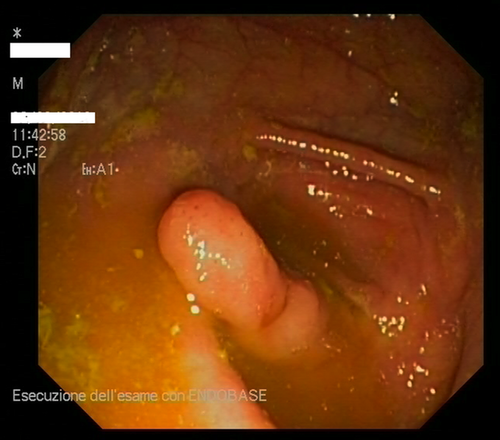Recurrent abdominal pain in 52-year-old male
Key Clinical Message
Intussusception of the appendix is a rare condition. Symptoms vary widely, whereas some patients are asymptomatic. Diagnosis is generally challenging and few cases have been diagnosed by colonoscopy. It is important to recognize the endoscopic appearance of this entity in order to avoid the potential hazard of an inadvertent “polypectomy”.
Question
A 52-year-old male underwent evaluation for a 6-month history of intermittent abdominal pain. The pain did last 24–48 h in each episode, and was associated with nausea and diarrhea. At admission, physical examination revealed a soft, abdomen, and mild right lower quadrant tenderness. Laboratory data were normal and an abdominal US was unremarkable. A colonoscopy was performed, which revealed a polypoid lesion in the cecum (Fig. 1).

Diagnosis
The lesion was recognized as an intussuscepted appendix and the patient underwent laparotomic appendectomy.
First reported in 1858 by McKidd 1, intussusception of the appendix is an extremely rare entity, with an incidence of approximately 0.01% in patients undergoing appendectomy 1, 2.
Presentation varies from acute appendicitis symptoms to chronic abdominal pain, to alteration in bowel habit, to intermittent lower gastrointestinal bleeding. Some patients are asymptomatic.
Although more than 200 cases of appendiceal intussusception have been reported in the literature, very few have been diagnosed preoperatively by colonoscopy 2.
It is important to recognize the endoscopic appearance of this entity in order to avoid endoscopic removal and the potential hazard of an inadvertent “polypectomy”.
Conflict of Interest
None declared.




